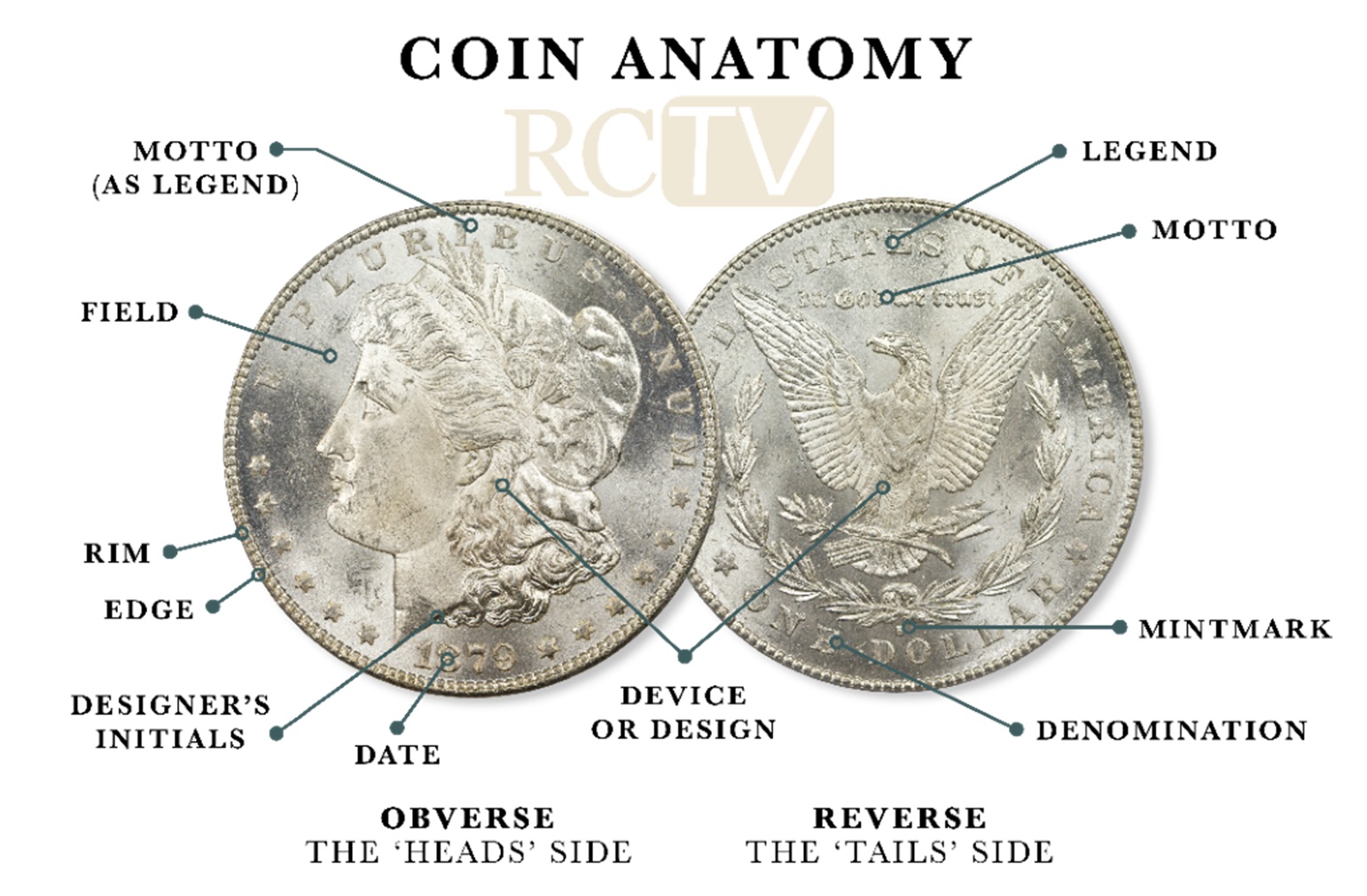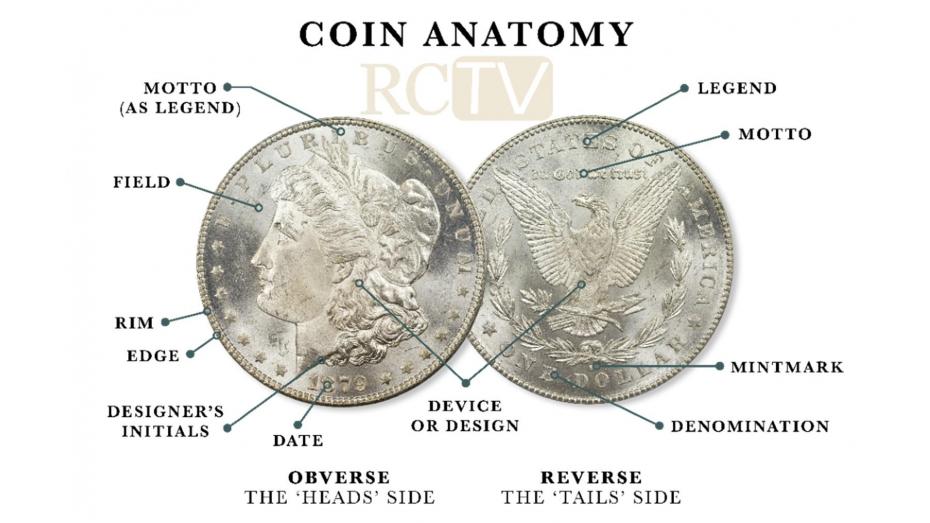Anatomy of a Coin
Anatomy of a Coin
Words such as “Heads” and “Tails” are commonly used to describe coins in day-to-day conversation. Although there is nothing particularly wrong with these words, there are specific terms that are used to describe every portion of a coin. Here you will find definitions for every proper numismatic term.

Numismatic Terms
Obverse – The front portion of a coin, or the “Heads” of a coin.
Reverse – The back portion of a coin, or the “Tails” of a coin.
Edge – The edge of a coin is the overlooked third side of a coin, which can be best be described as the side of the coin. Often times the edge is reeded or flat, but sometimes contains inscriptions.
Rim – The raised portion of a coin that completely encircles its outermost portion.
Field – The field of a coin is the flat portion that does not contain any design details or inscriptions.
Design/Device/Relief – There are multiple names for this aspect of a coin, but we will call it a design. This is the raised portion of a coin that gives it an artistic quality. The design is oftentimes a portrait, bust, or profile view of an iconic figure.
Inscriptions
Legend – The legend is the main inscription of a coin, generally indicating the country of origin.
Date – The date of the coin is an inscription which indicates the year that the coin was struck.
Mintmark – The mintmark of a coin is an inscription that represents where the striking mint is located.
Denomination – The denomination of the coin is an inscription which communicates its face value or monetary value.
Mottos – Mottos are inscriptions that are smaller than the legend. They generally express an idea that is central to the country of origin and its belief system.
Designer’s Initials – The designer’s initials appear on coins as a means of crediting the person who worked to create it.






